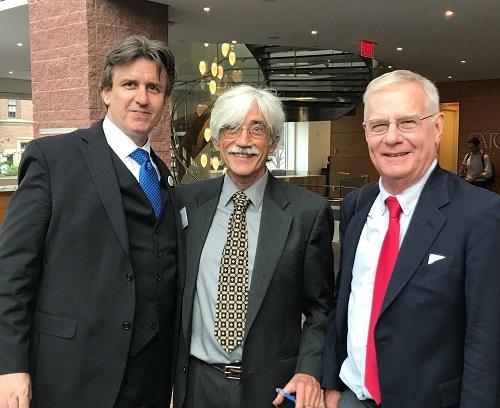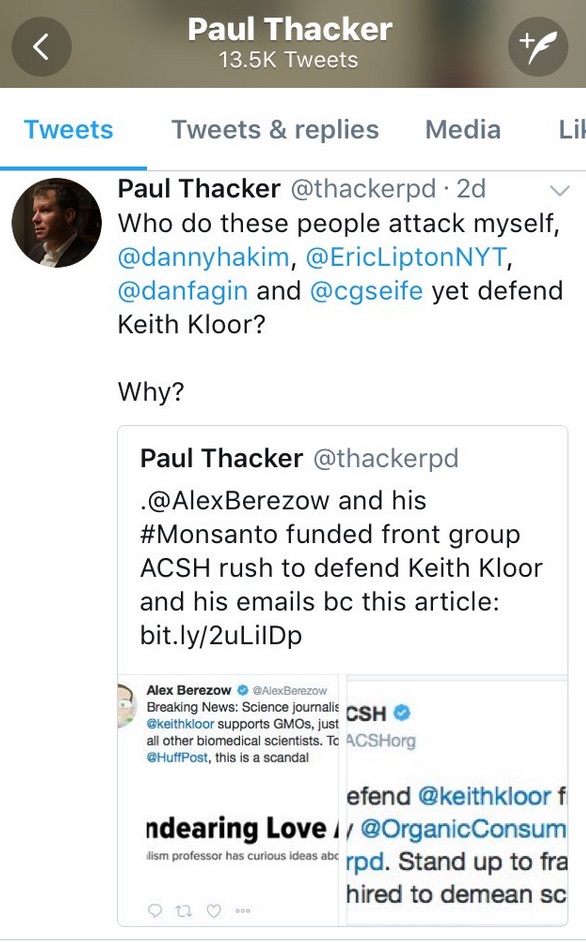
1. Dr. Julianna LeMieux and I were at the Cato Institute for the Dr. Ed Calabrese talk on the linear no-threshold model (LNT) used to set regulatory limits.
Members of our Board of Scientific Advisors, like Dr. Jerry Cutler and others, have long-considered LNT to be the Patient Zero of junk science used to create regulations. It basically says that particle 1 is as harmful as particle 1,000,000. Also mixed in the discussion is hormesis, a u-shaped curve in dose-response, which can also be controversial when misused by activists.
About an hour and a half flew by, and I think we could have listened for four hours more, but this is a complex issue that isn't going to be solved in an afternoon. Half of the room could be on a Red Team/Blue Team for this, should the government ever decide to revisit it rather than shrugging shoulders and saying that's the way it's always been done.
2. USA Today asked for an excerpt of our wildly popular Little Black Book of Junk Science and Dr. Alex Berezow was happy to oblige. "Fake news" is a popular term now but Junk Science was the original form of it. Groups like Center for Science in the Public Interest got media attention early on by making junk claims like that coffee causes breast cancer, in hopes they could sue coffee companies over it. Before that there was Rachel Carson's commissioned hit piece on science, Silent Spring, and before that we had what I talked about above, LNT for radiation. It was also syndicated on sites like the Daily News Record, Arizona Republic and more.
3. In the Lexington Herald-Leader, Dr. Josh Bloom, Senior Director of Chemical and Pharmaceutical Sciences at the American Council on Science and Health, discussed the ill-conceived House Bill 333, which imposes a three-day limit (with certain exceptions) on opioid prescribing in Kentucky, and therefore reflects a fundamental misunderstanding of the reasons behind the addiction epidemic.
The overwhelming majority of opioid overdose deaths are not a result of pills. Instead, the increase in deaths we are seeing now, and we warned America about in the FDA science panel testimony which made "fentanlyl" part of the popular lexicon, is a direct result of the difficulty in obtaining painkillers. To solve a small problem, we have created a large one. Opioid pills are difficult to get and prohibitively expensive, which caused addicts to switch in droves to heroin. This is the root cause of soaring overdose deaths, not pills from pharmacies, doctor prescriptions or greedy drug companies.
4. Our story on how genetically modified yeast can clean up heavy metal pollution was wildly popular, taking off on social news sites like Reddit and being covered in place like Engadget and Inhabit. A natural way to clean up pollution? Environmentalists are still opposed, because it's science and their donors are against it.
5. Denier For Hire Paul Thacker, a discredited former journalist who now exclusively attacks scientists for the Organic Consumers Association, is trying to establish martyrdom and is lumping himself in with New York Times journalists who are just bad at their jobs and not mercenary frauds like he is. It won't work. The others who have defended him in the past, like Charles Seife, who has done some real work, likely resent that they were also retracted because they coauthored with him and he did not disclose his rampant conflicts of interest.

Paul Thacker is not like Charles Seife or Dan Fagin (who have both shown poor judgment in the past by letting their political beliefs cloud their judgment) or the New York Times journalists he tries to include himself among in an important way - they are just wrong, whereas he is a paid fraud.
6. Finally, in Belleville News-Democrat the Answer Man, Roger Schlueter, calls on us to help address a reader question about whether or not taking pills made from your placenta (or anyone's I suppose, some weightlifters buy breast milk on the Internet) will cure depression, make you awesome, etc. You can probably guess what our response is but here you go if you are unsure.



